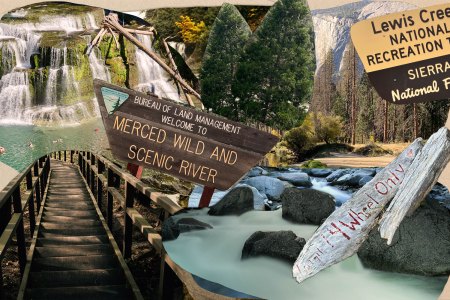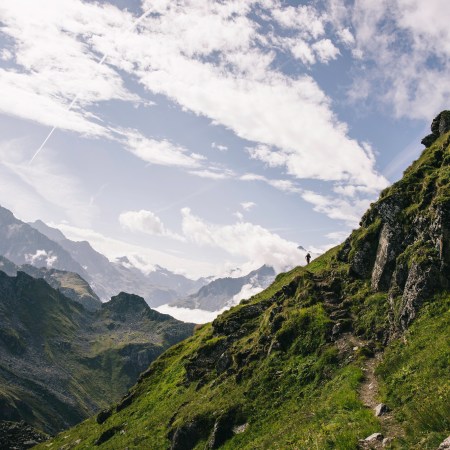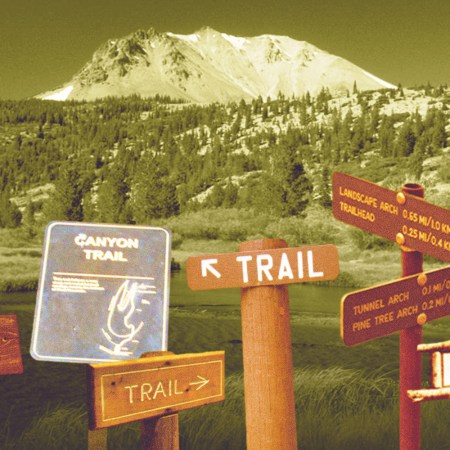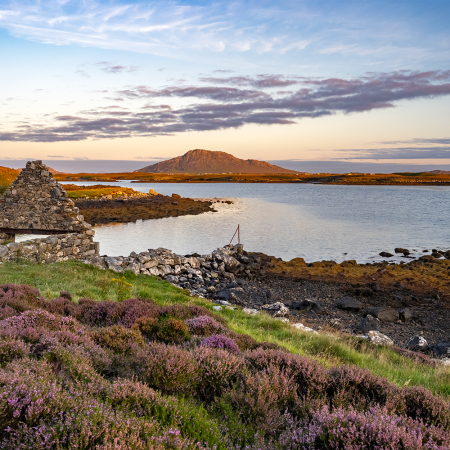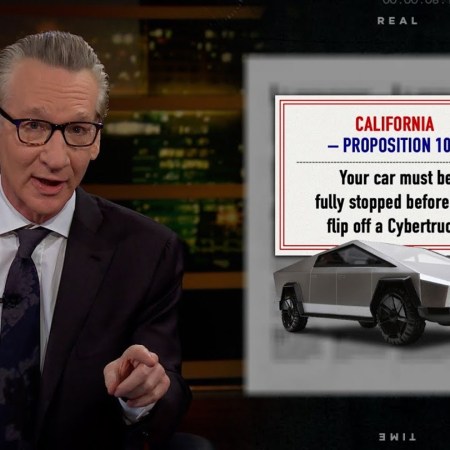The first time I visited the Grand Canyon, my wife was driving our rental car, leaving me to catch fleeting glimpses through the trees as we traveled up AZ-64. With each brief flash, my anticipation rose higher and higher. When we finally arrived at our first overlook, I felt a little misty-eyed taking it all in. Despite having seen it perhaps millions of times either in books or on television, no one is ever prepared for how vast and majestic it is in real life. The Grand Canyon’s a truly awe-inspiring place, reminding you just how beautiful our country can be.
I get asked a lot by friends, family and readers where they should go on their next trip. My answer, if they haven’t been, is almost always the Grand Canyon. When most people think of the Grand Canyon, they think of the national park’s south rim. (That’s where I saw it my first time.) You’ll find plenty of visitor centers, many of the iconic hikes and a scenic railroad, as well as the crowds. Fortunately, if you want to experience it for yourself, you have multiple options.
The national park also includes the less-visited north rim, which is open seasonally, typically May to December. (Only about 10% of GCNP visitors make it to the north rim, which is a 20-mile hike, but a 4.5-hour drive around the canyon.) You have fewer services, one lodge and a single campground, but lots of great day hikes. I’ve yet to visit the two national monuments — Grand Canyon-Parashant and the newly created Baaj Nwaavjo I’tah Kukveni – Ancestral Footprints of the Grand Canyon — but from what I’ve heard, they’re both great options, especially for folks who prefer a quieter, more rugged experience.

Then there’s Grand Canyon West, which isn’t operated by the federal government but rather by the Hualapai (pronounced Wall-uh-pie) Nation. About a two-hour drive east of Las Vegas, GCW is primarily visited by Sin City day-trippers. While on the shuttle bus from the staging area to the canyon, I sat across from 65-year-old Amina Merritt, who had the expression of a giddy schoolchild as we neared our destination. I knew that look well — I had the same one years ago. She’d been wanting to see the Grand Canyon her entire life, and with cataract surgery looming, she was about to fulfill her dream. A few minutes later, I took a photo of her and her friend Karla Jackson-Anderson, 74; the only thing more massive than the chasm was Merritt’s smile.
Getting an Authentic Yosemite Experience Outside the Park Boundaries
No park pass? No problem.The Grand Canyon is so large, your eyes and mind conspire to trick you. Stepping onto Grand Canyon West’s SkyWalk later that afternoon, I looked down nearly 800 feet to the canyon bottom. Although my brain knew I was safe — millions of visitors walk it each year without incident — I still had a deep, sinking feeling in the bottom of my testicles. The Colorado River looked so close, I could almost hit it with a stone. But according to security guard Sean Parks, the river was actually 4,000 feet down and 2.7 miles away. Likewise, the opposite side of the canyon looked much closer than it actually was.



“It’s a weird optical illusion,” Parks says. “Like your mind can’t comprehend how huge those distances actually are.”
Grand Canyon West doesn’t offer much in the way of hiking, but Guano Point — named for a relatively short-lived mining operation that collected nitrogen-rich bat poop for fertilizer — was a good, albeit short, option. The walk was maybe a quarter of a mile long and allowed visitors to get right up to the edge for photos.
I also got to experience the Grand Canyon from a totally different perspective — floating on the Colorado River at the canyon bottom. Hualapai River Runners offers both one- and two-day tours on the Colorado; my two-day trip meant we would be camping overnight somewhere along the river.
The trip from the Hualapai Lodge in Peach Springs to the Canyon bottom took about an hour on a rutted dirt road. Every time our bus hit a bump, we’d launch at least six inches into the air. By the time we reached the bottom, I thought I might be concussed from hitting the roof of the bus so many times. But I promptly forgot about that as I exited, looking up at the huge canyon walls enveloping us. The Grand Canyon makes us all feel tiny.
The 16 rafters were divided into two inflatable boats, each with its own guide. I was on the raft with Scott, an experienced guide who cut his teeth on rivers near Hoover Dam. Cody, a local indigenous guide who was entering his second year on the river, would steer the other raft.
We tackled between six and eight rapids, all on the first day. If you’ve done a rafting trip on another river, you’ll likely find the rapids fun and not overly intimidating. The rapids aren’t rated on the standard I (shallow moving water with no obstacles) to VI (completely unnavigable) scale, but if I had to guess, I’d say the worst one would be a IV, whitewater that requires some technical skill but is still relatively safe.
We handled all of the rapids with relative ease until the last one that came just after lunch. I manned the front of the boat; Scott claimed it was because I was one of the strongest paddlers, but I was relatively sure he just put the two largest guys in front to block the rest of the boat from getting sprayed by the cold waves.
As soon as we entered the edge of that last section of whitewater, the nose of the boat lurched upward. I heard a voice behind me yelling “Dig in! Dig in!” In other words, “Paddle harder, dummy!” But when I thrust my paddle downward, I was only moving air; the nose of the boat was still bouncing off the water and seemingly hovering in space. We slammed into the side of the canyon wall so hard I thought we might capsize. The raft teetered for the briefest of moments, as if the cosmos was deciding whether or not we should all go for a very cold swim. Luckily, the boat returned to the horizontal position as we ricocheted into calmer water.



Not too long after that rapid, we lashed our rafts to the motorized supply raft, which taxied us to our campsite for the night. While our guides prepared dinner, we set up our tents on a sandy ridge overlooking the river. The more experienced campers helped the folks who hadn’t slept outside since the Clinton administration. It’s rare that a group of 16 people, mostly made up of couples, would all get along so well, but we did.
That night, over a dinner of salad, well-done steak and instant mashed potatoes, the entire group huddled together and laughed about the day. For people used to luxury vacations, it might have seemed like roughing it, but after a long day on the river, it felt absolutely decadent. As night fell, the stars lit up the canyon so bright you almost didn’t need a headlamp when making your way to the privy. It was one of the best nights I’ve had in quite some time.
The next morning, one of the rafters was feeling ill, so we quickly broke camp and made our way downriver, where she was met by an EMT and evacuated to a nearby hospital to be treated for dehydration. Freed from having to paddle, I thought about the earliest Native Americans who likely explored these waters, likely on tule-reed rafts, and John Wesley Powell, the one-armed Civil War Major who led the first-known expedition of the Canyon, lasting 14 weeks and more than 1,000 miles. Unlike Powell, who lost half his boats and four crewmen during his time on the river, my biggest inconvenience was not having any cell signal to post photos of my trip.
Nearing the end of our journey, my mind briefly flashed on work I needed to do when I returned to civilization, of mortgage payments and emails I had to return. But I pushed all those thoughts aside in the trip’s final hours to revel in my surroundings, from the towering sandstone cliffs to the red-tailed hawks soaring overhead to the muddy Colorado. Despite the optical illusions, this grandest of Canyons has a way of putting things in the proper perspective.
This article was featured in the InsideHook newsletter. Sign up now.

